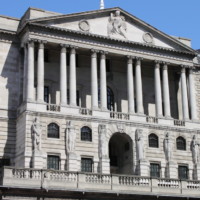
The BoE’s decision to up the base rate by 0.75 per cent to three per cent is not only a blow to borrowers, brokers and lenders alike, it has also had financial experts assessing and reassessing where the figure may finally land before it starts to retreat again.
In a video address yesterday, BoE governor Andrew Bailey maintained that base rate increases are likely to slow, although they are unlikely to come down anytime soon.
He said: “We can’t make promises about future interest rates but based on where we stand today, we think bank rate will have to go up by less than currently priced in financial markets (around 4.5 per cent).”
However, some experts aren’t so sure…
The lower end
A number of financial institutions have given their take on what the peak may be, ranging from the somewhat benign to the genuinely worrying.
At the lowest end, Danske Bank analysts have been quoted as saying that the rate will come to rest only 0 .75 per cent higher than it is now.
The bank said: “We keep the rest of our forecast intact, expecting the bank rate to peak at 3.75 per cent. We expect fewer hikes than priced in markets as we emphasise the weak growth outlook.”
Meanwhile, ING expects the rate to land just one percentage point higher than its current figure.
ING’s developed markets economist James Smith wrote: “Andrew Bailey was very forthright in his press conference that rates are unlikely to rise as far as markets expect. What’s more, the committee is very divided. One policymaker, Silvana Tenreyro, voted for just 25bp worth of tightening today.
“The Bank may have stepped up the pace this month, but central banks globally are having to assess whether ongoing aggressive rate hikes can be justified at a time when housing and corporate borrowing markets are beginning to creak. The dovish messages littered throughout today’s statement and forecasts are a clear sign of that.
“We’re pencilling in a 50bp rate hike in December and we think the bank rate is unlikely to rise above four per cent next year.”
Wells Fargo analysts agreed with this assessment.
Their experts are quoted as saying: “The soft economic outlook reinforces our expectation for the BoE to underdeliver on future rate hikes compared to market expectations, and ultimately bring the policy rate to a peak of four per cent in Q1 2023, compared to a peak of more than 4.5 per cent expected by market participants.”
The middle ground
Despite attempts by Bailey to mollify the market and pronouncements that its forecasts are too high, the majority of experts believe that rates are likely to come in bang-on the 4.5 per cent figure that markets are quoting.
Melanie Baker, senior economist at Royal London Asset Management said: “The Monetary Policy Committee (MPC) signalled that more interest rate rises were likely but that they felt the peak priced in by markets was too high.
“Despite another set of grim forecasts for the real economy, including for the unemployment rate, they hiked 75bp [yesterday]. It is clear that their focus remains inflation.
“Interest rate hikes, in an effort to lower inflation, are worsening the near-term economic outlook. The decision, forecast and minutes today are consistent with downside risk to my forecast peak for UK interest rates at 4.5 per cent.”
Sanjay Raja, senior economist at Deutsche Bank agrees with this assessment.
He said: “We stick to our view of bank rate peaking at 4.5 per cent, though we see more downside risks to our call, following today’s more dovish message from the MPC.
“With inflation, and particularly core inflation, likely to remain more persistent given labour market tightness, the need for more restrictive rates remains strong, warranting a further push into restrictive territory. We expect the MPC to hike bank rate by 50bps in December and February, before slowing to 25bps hikes in March and May.”
French bank Societe Generale also feels that the peak will be in line with the market’s thinking when it was quoted yesterday as saying: “We maintain our forecast of… a peak of 4.5 per cent at the March 2023 meeting.”
On the high side
However, there are those who feel that the base rate may jump even higher. Dutch financial services giant Rabobank said that it expects to “see rates peaking at 4.75 per cent”.
And one particular institution believes that rates could head could move into the five per cent territory.
Ruth Gregory, senior UK economist at Capital Economics said: “Although the MPC raised interest rates by 75 basis points, from 2.25 per cent to a 14-year high of three per cent, it sent the strongest signal yet that it thinks rates won’t need to rise much above four per cent.
“But with price/wage expectations still elevated, we think the inflation battle is far from won and that rates will peak at five per cent.”
With no general consensus on where the base rate will land, it looks like borrowers, brokers and lenders alike will just have to wait and see.
















